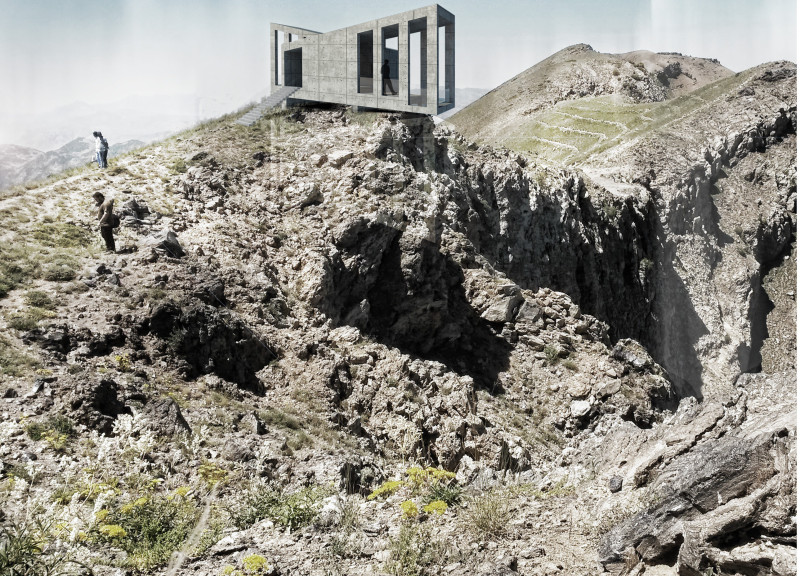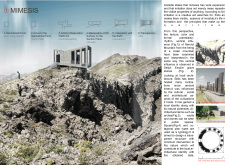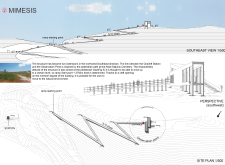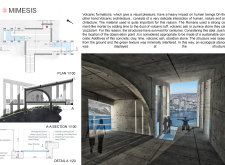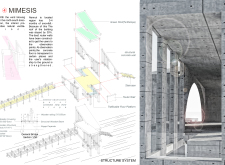5 key facts about this project
The design focuses on the concept of mimesis, inspired by Aristotle’s idea that imitation can reveal deeper truths about the world. Located in Bitlis, a region rich in history and culture, the project aims to bridge the gap between the built environment and the landscapes that surround it. It features observation platforms intended to draw users into the natural setting, creating a vital connection between people and place.
Geometric Forms
The project explores geometric shapes that represent both the inanimate and the vital aspects of life. These forms are thoughtfully arranged to facilitate interaction with the landscape. Observation platforms emerge as key features, strategically placed to enhance the user experience and encourage engagement with the site. This design invites visitors to immerse themselves in the environment while allowing architecture to become an extension of nature.
Cultural Context
Deep ties to the local culture shape the design. It incorporates historical elements such as arches, vaults, and domes that are familiar in Bitlis architecture. By weaving these typological references into the structure, the design respects the area’s architectural history while providing a modern interpretation. The building becomes more than just a structure; it serves as a vessel for cultural storytelling, reflecting the unique identity of its surroundings.
Material and Integration
Although specific materials are not heavily detailed, there is an emphasis on utilizing strong cement-like mortar derived from volcanic tuff, ash, or pumice. Known as pozzolan, this material connects to the geological characteristics of the site. Additionally, the potential use of sustainable concrete, which may include clay, lime, volcanic ash, and obsidian stone, aims to reduce environmental impact while ensuring the structure maintains a relationship with the earth.
Design Particulars
The commitment to transparency is evident throughout the design. Open spaces and carefully chosen materials enhance the visual relationship between the building and its natural surroundings. This openness allows for the entry of light and creates a direct line of sight to the landscape, emphasizing the beauty of the outside world. The observation points, with their clear views, offer users the chance to pause and appreciate the environment, with the architecture itself enhancing the experience of being in nature.


